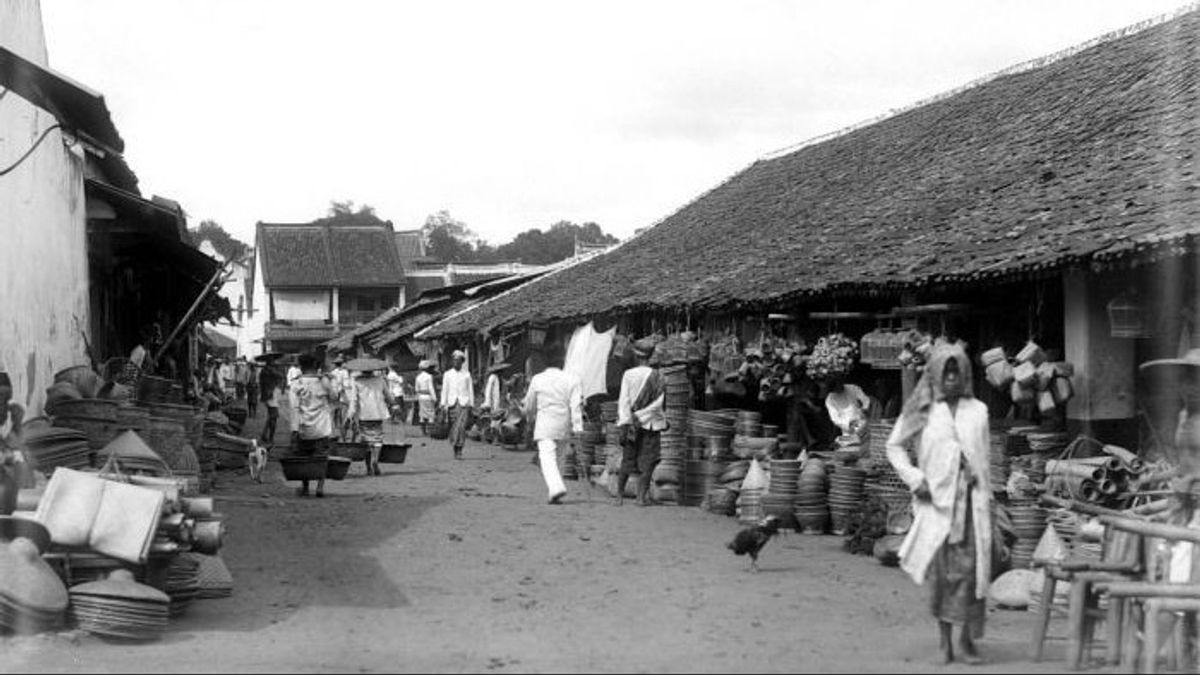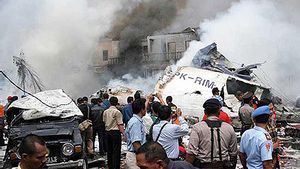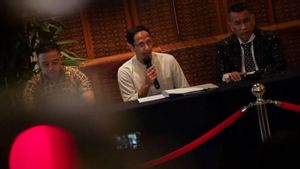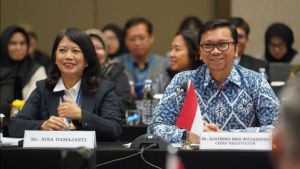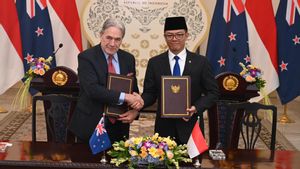JAKARTA - Discussing markets in Jakarta would be incomplete if it did not include Pasar Senen as one of the largest shopping centers in the country. This is because it is not just a matter of buying and selling that makes commerce alive, but the history contained in Pasar Senen has also made a difference from other markets.
The difference lies in the position of Pasar Senen, which witnessed the journey of the capital city of the Republic of Indonesia from being named Batavia, to changing its name to Jakarta. It started with the interest of a wealthy conglomerate in Batavia named Yustinus Vinck. He was lulled by an area filled with fertile agricultural land belonging to the member of the Indies council, Cornelis Chastelein.
For this interest, in short, Vinck bought the area for 39,000 ringgit in 1733.After that, Vinck thought of turning part of his land into two markets - Tanah Abang Market d Pasar Senen - which was built in 1735.
As revealed by Zaenuddin HM in his book entitled The Origin of Djakarta Tempo Doeloe (2018). During its development, the Dutch in Batavia called Pasar Senen formerly as Vinckpasser (Pasar Vinck). Meanwhile, because the pronunciation is rather difficult, the indigenous people are even more familiar with this market as Pasar Senen because it only opens every Monday.
This is consistent with the history of many markets in Jakarta which are only open on certain days. For example, on Monday, Pasar Senen rationed, Tuesday had a market now known as Koja Market, Wednesday for Pasar Rebo - now Kramatjati Main Market, Thursday Mester Passer's ration - now Pasar Jatinegara, Friday market share in Lebak Bulus, Pasar Klender, and Pasar CImanggis, on Saturdays the allocation for Tanah Abang Market, as well as Sundays for the market on the private land of Tanjung Osst which is now known as Pasar Minggu.

Famous for a long time
The fame of Pasar Senen was also revealed by Senior Journalist Alwi Shahab in his book entitled Maria van Engels: Men-in-law Habib Kwitang (2006). Because of the attractiveness of Pasar Senen as a new trade center which is open only on Monday, Alwi invited the public to enjoy a painting by VOC soldier Johannes Rach in 1770 entitled Pasar Snees.
“Nobody thought, this is the situation of Pasar Senen 236 years ago. Pasar Senen, which is one of the largest shopping centers in the country, is still constructed of bamboo with thatched roofs. The painter Rach gave the title Snees market, ”wrote Alwi.
The origin of the word Snees is what the Dutch called the Chinese at that time. How could I not, most of the people who were selling at that time were indeed of Chinese descent. Even in the following years, they also had the most stalls in the market.

When the market was taken over by the Governor General of the VOC, Petrus Albertus Van der Parra, who ruled from 1761 to 1775, the number of stalls and buildings in the market already totaled 228 buildings made of bamboo. The rest are made of thatched roofs with a total of 139 buildings.
Pasar Senen, which was originally open only on Monday, at the request of many people, finally opened on Friday. Until, until 1766, Pasar Senen began to open every day which lasted until the present era.
A gathering place for national celebrities
In the late 1930s, Pasar Senen was not only known as a center of commerce, but had become a meeting point for young intellectuals or underground fighters, such as AK Gani and Chairul Saleh. This was revealed by Misbach Yusa Biran who wrote the book Miracles at Pasar Senen (1971).
“At first, the student fighters came to Senen to sell books to the flea bookstore 'Nasution' behind the Grand Cinema or buy books there. Understandably, their finances have become minimal as a result of which they are widely used to finance various meetings and other struggling activities. Eventually, the vicinity of the bookstore became their rendezvous, ”wrote.
"During the Japanese occupation, 1942-1945, Pasar Senen was also a stopover for artists, because the poet Chairil Anwar often appeared there," added Biran.
Sure enough, the appearance of Chairil Anwar was also immortalized by Sergius Sutanto in a novel entitled It's Kali Tak Ada Yang Seeking Love (2017). In a book that reviews the artist's journey known as the Jalang's animal poem, he recounts the times when the pioneers of the class of 45 were still familiar with Pasar Senen.
“The sun is almost setting. The street east of Harmonie was already deserted. I walked along Waterlooplein (Banteng Field) to Jalan Gunung Sahari and finally arrived at Pasar Senen, an area that is quite familiar to me since I lived not far from there. This area is home to immigrants, including those from West Sumatra, my mother's village. Shops and rows of colonial and Chinatown-style houses line the left and right. There are many food vendors on the side of the road, ”wrote Sergius Sutanto.
In line with that, Pasar Senen's fame has inspired several short stories from the poet SM Ardan which he collected in a book entitled "Terang Bulan Terang di Kali: Stories around Jakarta" (2007). One of them is in a short story entitled Bulan Witnessing.
"In the sky, the moon is full. Thin clouds here and there. Senen started with people passing by and busy with vehicles. Opposite the Grand Cinema, rickshaws and their drivers await their cargo. Not far from the row, Masenun faces his wares; a small chest, bottles, a tin of butter; all of which are full of oil. Also Masenum's hand, ”concluded Ardan.
The English, Chinese, Japanese, Arabic, and French versions are automatically generated by the AI. So there may still be inaccuracies in translating, please always see Indonesian as our main language. (system supported by DigitalSiber.id)
